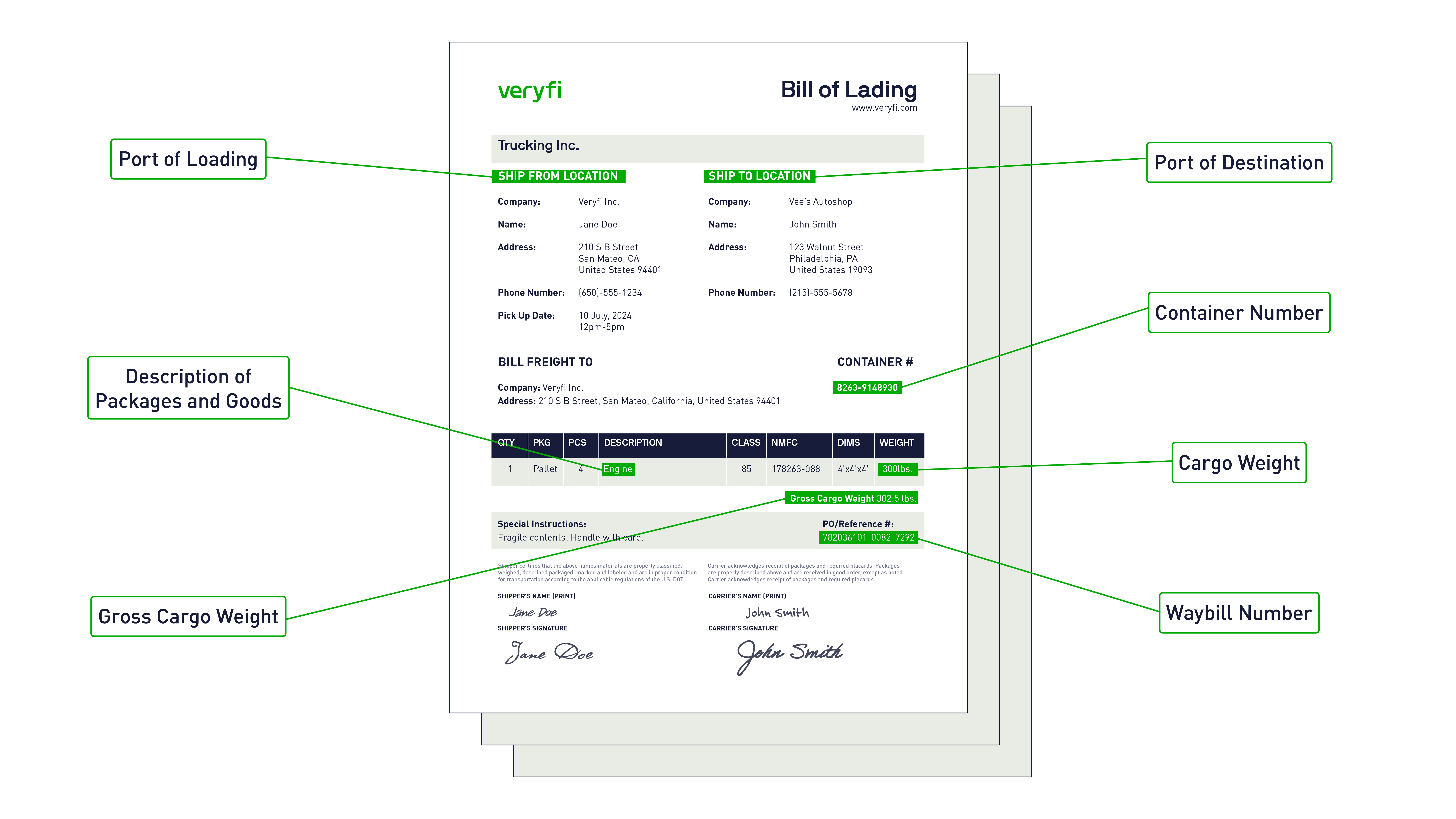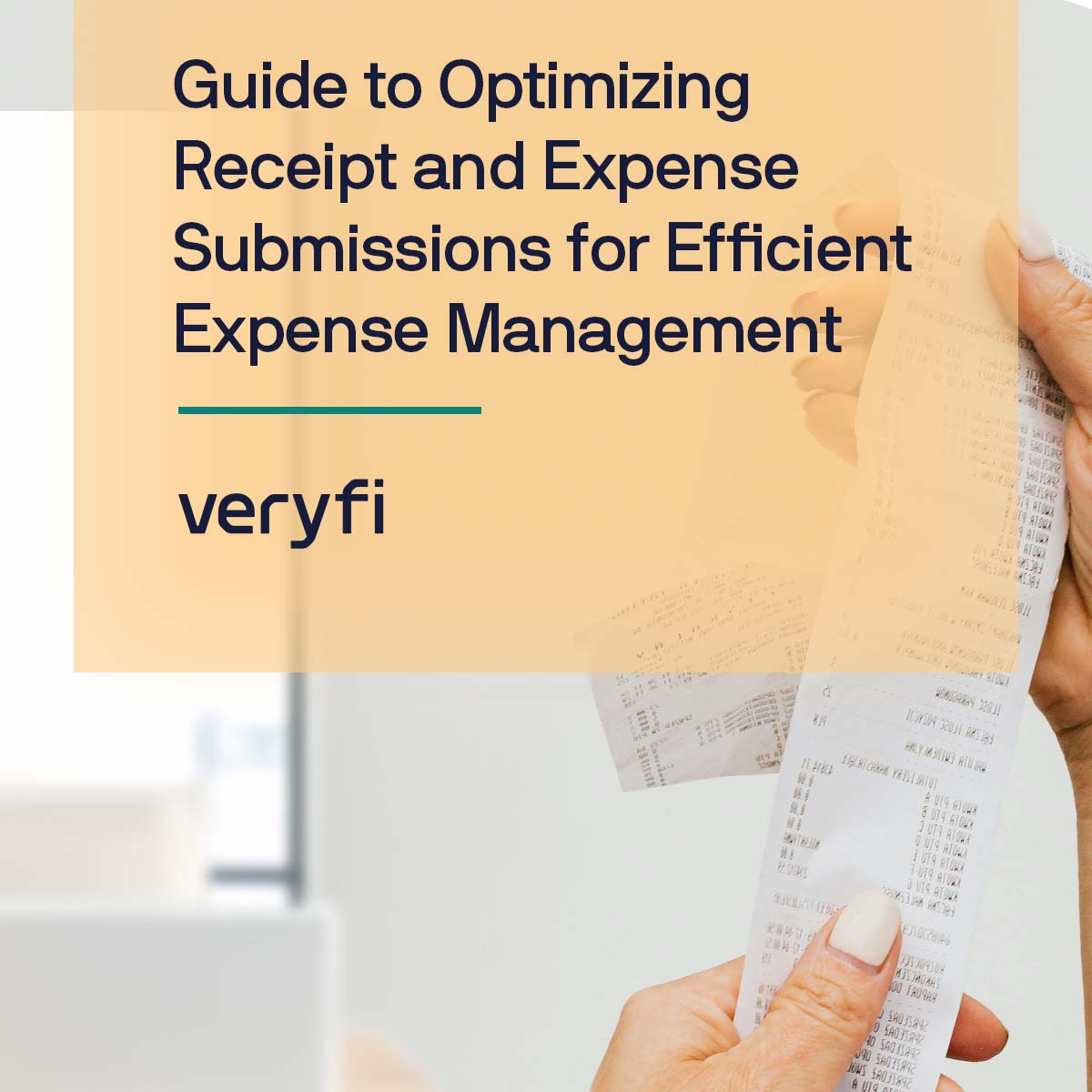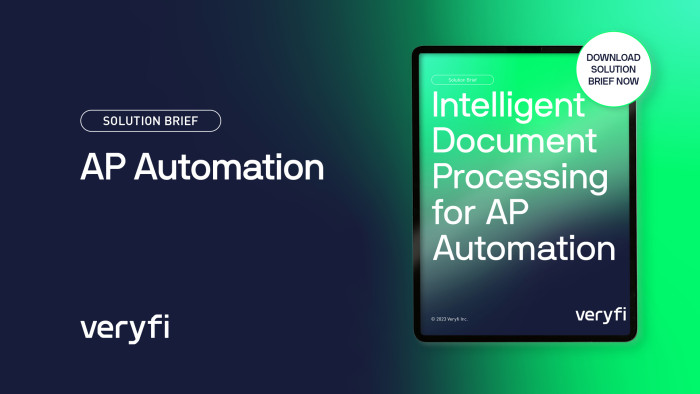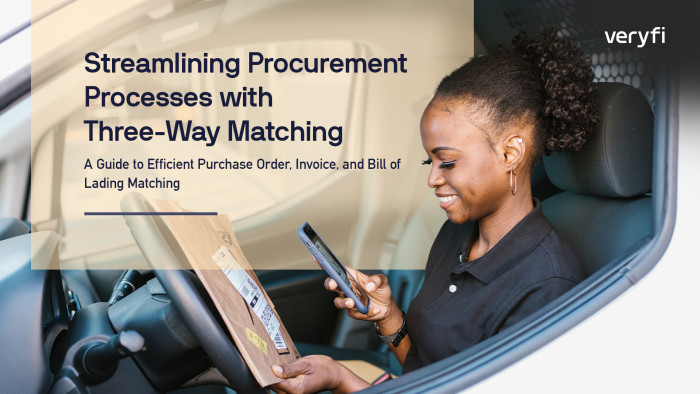BOL (Bill of Lading) OCR API BOL (Bill of Lading) OCR API
Transform complex Bills of Lading into structured data with AI-powered extraction of shipping details, cargo descriptions, and consignment information - enabling automated 3-way matching with purchase orders and invoices while streamlining logistics documentation across sea, air, and land freight formats.
Get Started for Free Free Demo
What is BOL (Bill of Lading) OCR?What is BOL (Bill of Lading) OCR?
Bill of lading OCR (Optical Character Recognition) is a technology that enables the automatic extraction of data from bill of lading documents. A bill of lading is a crucial document in international trade, and OCR technology makes it easier for businesses to extract valuable information, such as the consignor, consignee, and product descriptions, from these documents. With bill of lading OCR, businesses can streamline their operations, reduce manual errors, and improve their supply chain efficiency.
Bill of lading OCR also improves data accuracy by eliminating errors that may occur during manual data entry. Businesses can easily manage large volumes of shipping documents, track their shipments in real-time, and improve their overall supply chain management. Additionally, businesses can reduce the risk of fraud, improve their compliance with trade regulations, and enable more efficient AP workflows.

BOL (Bill of Lading) OCR APIBOL (Bill of Lading) OCR API
Veryfi’s BOL (Bill of Lading) OCR API is easy and fast to implement with just a few lines of code (as shown).
BOL (Bill of Lading) OCR API comes bundled with:
✓ Day-1 Ready Pre-Trained Purchase Order AI model,
✓ Free 🧰 SDKs to help you launch faster in your preferred programming language and
✓ Easy to use no-code API 🗔 Portal where you can store and edit your documents, fine-tune the ML model and more.
Need help? email support@veryfi.com
Supported FieldsSupported Fields
-
Vendor/Merchant
- Name and Raw Name
- Address and Raw Address
- Logo
- Phone
- Fax
- Latitude
- Longitude
- Website Url
- Logo
- Vendor Category
- Vendor Account currency
- VAT Number (Value-Added Tax)
- ABN Number (Australian Business Number)
- Vendor Registration Number
- Store Number Name (enriched)
- Learn more …
-
Dates
- Invoice Date
- Due Date
- Order Date
- Ship Date
- Delivery Date
- Start Date (or arrival in hotel folio)
- End Date (or departure in hotel folio)
- Line Item Start Date (service provided dates)
- Line Item End Date (service provided dates)
- Learn more …
-
Line-Items
- Date
- SKU (Stock keeping unit)
- UPC (Universal Product Code)
- HSN (Harmonized System Code/Number)
- Category
- Section
- Description
- Quantity
- Reference
- Unit of Measure
- Price
- Tax
- Tax Rate
- Discount
- Discount Rate
- Total
- Type (food, product, alcohol,..)
- Weight (eg. kg/lb)
- Start/End Date
- Country of Origin
- Lot number
- Learn more …
-
Financials
- Subtotal
- Discount
- Cashback
- Shipping cost
- Tax (VAT, GST)
- Tax Lines
- Tip
- Total
- Rounding
- Currency Code
- Currency Exchange Rate
- Insurance
- Incoterms
- Balance (current / previous)
- Learn more …
-
Tax Lines Breakdown
- Tax name
- Tax rate %
- Tax total
- Tax base
-
Meta
- Document Type (receipt/check/purchase order/invoice etc)
- Document Title
- Category
- Tag
- OCR Text
-
Ship To
- Name
- Address
- Tracking Number
- Ship Date
- Delivery Date
- Order Date
- Incoterms
- Insurance
- Weight + List
-
Bank Information
- Bank name
- Bank number
- Routing number
- Account number
- IBAN (International Bank Account Number)
- SWIFT / BIC
- Learn more …
-
Barcodes
- QR + Barcodes
- PDF417
- EAN
- UPC
- Code128
- Code39
- I25
- Learn more …
-
Payment Method
- Card Type (eg. visa, mastercard etc)
- Card Number
- Terms
-
Identifiers
- Account Number
- Invoice Number
- PO (Purchase Order) Number
- Reference Number
-
Bill To
- Name
- Address
- Phone Number
- VAT Number
- ABN Number
- Bill to ABN Number
- Payment Terms
- Business Registration Number
But wait, there’s more…But wait, there’s more…
-
3-Way Matching
Transform invoice-to-purchase-order matching into an automated process with AI-powered validation that compares unit prices, quantities, and line items – eliminating manual reconciliation and detecting discrepancies instantly.
-
Global Port Code Validation
Automatically validate and standardize port codes (UNLOCODE) across all shipping documents, ensuring accuracy of origin, destination, and transshipment points while maintaining compliance with international shipping standards.
-
Line Item Categorization
Convert free-text product descriptions into structured spend categories using machine learning classification – automatically mapping to UNSPSC, custom taxonomies, or internal category codes while maintaining consistency across your procurement lifecycle.
-
Duplicate PO Detection
Automatically identify duplicate or similar purchase orders using AI-powered pattern matching – preventing double payments, catching redundant submissions, and flagging potential errors across order history in real-time. The system analyzes multiple data points including supplier details, line items, quantities, pricing, and delivery dates to catch duplicates even when documents appear different at first glance.
-
Specialized Fields
– PO Number Format Validation (match custom enterprise numbering schemas)
– Contract/Framework Agreement Reference Detection
– Department/Cost Center Code Validation
– Approved Vendor List Verification
– Budget Code Matching
– Delivery Terms (Incoterms) Extraction
– Payment Terms Net Days Detection
– Multi-Currency Line Items Support
– Split Delivery Date Detection (per line item)
– Required-By Date Validation
– Requisitioner Information Extraction
– Authorized Signatory Validation
– Custom Fields Mapping (client-specific PO formats)
– SKU/Part Number Standardization
– Unit of Measure (UOM) Standardization
– Blanket PO Detection and Processing
– Change Order Version Control
– Quote Reference Number Extraction




